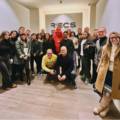Recs Architects: an international network of professionals in architecture.
History
Recs Architects is not only a brand, but rather, it is a big family, numbering several local architectural firms led by expert architects and trained in different research fields such as architecture, as well as urban and interior design. Teaching and sharing the same values and principles, as well as the same practical and theoretical methodology favour the birth of a unique, advanced and competitive entity: Recs Architects.
Thanks to the experience each associate firm acquired along the years in the cornerstone disciplines, in construction, urban design and sustainability, Recs Architect is an advanced brand, able to understand those dynamics underlying the development of any given city.
Such peculiar features will also allow us to approach the main issues connected with living in such a way that the critical points and the potential of each city are immediately clear.
Cities should be seen as complex entities, themselves made up by several components such as wards, blocks, roads, public spaces, transports and the like, themselves the elements to work on in order to enhance the “quality of life” citizens can enjoy. That is the main objective of the philosophy Recs Architects espoused and the final aim of every advanced civil society.
What doesRecs Architects mean?
The Recs part arises from Re City Size, an imaginary acronym we invented.
This acronym recalls re-defining and re-thinking the dimensions of a city: Recs Architects imagines urban spaces as intelligent organisms, being inclusive, liveable, sustainable and joined by its invaluable human capital. This is how we see future cities, and that is our challenge.
In order to reach our goal, we start with cities as they are, renovating them (RE-Novate), regenerating their spaces, and redesigning them (RE-Design), making them more beautiful and functional. We rethink (RE-Think) the ways of life, in order to create multi-purpose, sustainable fluid space, therefore improving quality of life. We revisit arcitectural public spaces, creating multicentric cities within natural contexts and making the most of new technologies in order to make these cities “intelligent”, better and more user-friendly.








